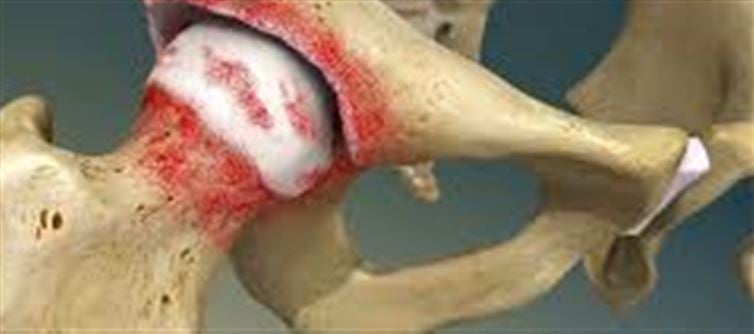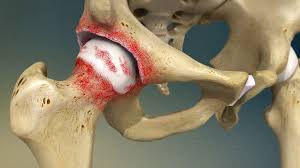
Hip bone weakness, also known as hip osteopenia or osteoporosis when severe, is becoming an increasingly common problem, not just for the elderly, but even among younger people. Bone density naturally decreases with age, but several lifestyle factors are contributing to the alarming rise of hip bone weakness across age groups. Prolonged sitting, poor nutrition, lack of physical activity, and insufficient exposure to sunlight are all significant culprits.
Understanding the causes of hip bone weakness and adopting effective prevention strategies can help you protect your hip health and overall well-being.
1. What Is Hip Bone Weakness?
Hip bone weakness refers to a reduction in bone density in the hip area, making the bones fragile and more prone to fractures. The hip joint is a crucial part of the body, bearing weight during movement, and when the bones become weak, the risk of fractures and other complications increases. This can lead to chronic pain, loss of mobility, and a decrease in overall quality of life.
2. Causes of Hip Bone Weakness
A. Aging
As we age, our bones naturally lose density. Bone mass peaks in our late 20s and starts to decline from the age of 30 onward. This natural process accelerates in women after menopause due to a decrease in estrogen levels, a hormone that helps maintain bone mass.
B. Sedentary Lifestyle
A major contributor to hip bone weakness is a lack of physical activity. Prolonged sitting, especially in modern lifestyles dominated by desk jobs and sedentary behaviors, leads to reduced bone strength. The bones become weaker over time because they aren't subjected to the weight-bearing exercise that keeps them strong.
C. Poor Diet and Nutritional Deficiencies
A calcium-deficient diet is one of the leading causes of bone weakness. calcium and vitamin D are essential for bone health. If you're not getting enough of these nutrients, your bones may become fragile. Inadequate intake of magnesium, protein, and other micronutrients can also compromise bone health.
D. Lack of Sunlight and vitamin D
Vitamin D is crucial for calcium absorption in the body. Sunlight is the most natural source of vitamin D, and lack of exposure can lead to deficiencies, making the bones weaker. Those who live in regions with limited sunlight or who spend too much time indoors are at risk.
E. Hormonal Imbalances
Hormonal fluctuations, especially a decrease in estrogen (in women) or testosterone (in men), can lead to bone loss. Conditions like hyperthyroidism or medications like steroids can also contribute to reduced bone density and increased risk of fractures.
F. Underlying health Conditions
Certain medical conditions, such as rheumatoid arthritis, diabetes, or anorexia, can negatively impact bone health. These conditions may alter the body's ability to produce healthy bone tissue or affect calcium and vitamin D metabolism.
3. Warning Signs of Hip Bone Weakness
Hip bone weakness often develops slowly without obvious symptoms, but some early signs may include:
· Pain in the hip or lower back, especially after physical activity.
· Limited mobility or difficulty standing or walking.
· Frequent falls or a feeling of unsteadiness.
· Fractures occurring easily, even from mild falls or pressure.
If you experience any of these symptoms, it’s important to consult with a healthcare provider to assess your bone health.
4. Prevention Tips for Stronger Hip Bones
While you can’t stop the aging process, you can take several steps to slow down bone loss and strengthen your hip bones. Here are some key prevention strategies:
A. Engage in Weight-Bearing Exercises
Regular physical activity, especially weight-bearing exercises, is crucial for maintaining bone health. These exercises include:
· Walking
· Jogging
· Dancing
· Climbing stairs
· Strength training
These activities stimulate bone formation and improve bone density by putting pressure on the bones, encouraging them to become stronger. Aim for at least 30 minutes of exercise most days of the week.
B. Focus on Strengthening Exercises
Building muscle mass through strength training exercises helps support bone strength. Focus on exercises that target the lower body, such as squats, lunges, leg presses, and core strengthening exercises. Building strong muscles around the hips helps to absorb stress on the bones, reducing the risk of fractures.
C. Get Enough calcium and vitamin D
Calcium is the building block of bones, and you need to ensure you're getting enough through your diet or supplements. Dairy products like milk, yogurt, and cheese, as well as non-dairy sources like tofu, leafy greens, and almonds, are excellent sources of calcium.
Vitamin D helps the body absorb calcium. Get enough vitamin D by:
· Spending 15-30 minutes in the sunlight daily (especially in the morning or evening).
· Eating fatty fish (like salmon and mackerel), fortified cereals, and egg yolks.
· Taking vitamin D supplements, if necessary.
D. Maintain a Healthy Weight
Being either underweight or overweight can increase your risk of hip bone problems. Excess body weight places undue stress on the hip bones, while being underweight can lead to bone loss. Aim for a balanced diet and regular exercise to maintain a healthy weight.
E. Avoid Smoking and Limit Alcohol Consumption
Smoking and excessive alcohol consumption can lead to bone thinning. Smoking reduces blood flow to the bones, while alcohol impairs bone formation and calcium absorption. Avoid smoking altogether, and limit alcohol to moderate levels.
F. Get Regular Bone Density Screenings
For those at higher risk (such as postmenopausal women, individuals with a family history of osteoporosis, or those with other risk factors), it's important to undergo regular bone density screenings. These tests can help detect bone loss early, allowing for timely intervention and treatment.
5. When to See a Doctor
If you have risk factors for hip bone weakness or experience symptoms like persistent hip pain, difficulty walking, or frequent fractures, it's important to consult a healthcare provider. They may recommend a bone density test to assess your bone health and determine if you're at risk for fractures. Early intervention with medications, physical therapy, or dietary changes can help prevent further bone loss.
Conclusion: Protect Your Hip Bones Early On
Hip bone weakness is a growing concern, but it can be prevented with the right lifestyle choices. Regular physical activity, proper nutrition, and good habits like limiting alcohol and quitting smoking can go a long way in protecting your bones. Start making proactive changes today to strengthen your hip bones and reduce your risk of fractures later in life.
Disclaimer:
The views and opinions expressed in this article are those of the author and do not necessarily reflect the official policy or position of any agency, organization, employer, or company. All information provided is for general informational purposes only. While every effort has been made to ensure accuracy, we make no representations or warranties of any kind, express or implied, about the completeness, reliability, or suitability of the information contained herein. Readers are advised to verify facts and seek professional advice where necessary. Any reliance placed on such information is strictly at the reader’s own risk.




 click and follow Indiaherald WhatsApp channel
click and follow Indiaherald WhatsApp channel